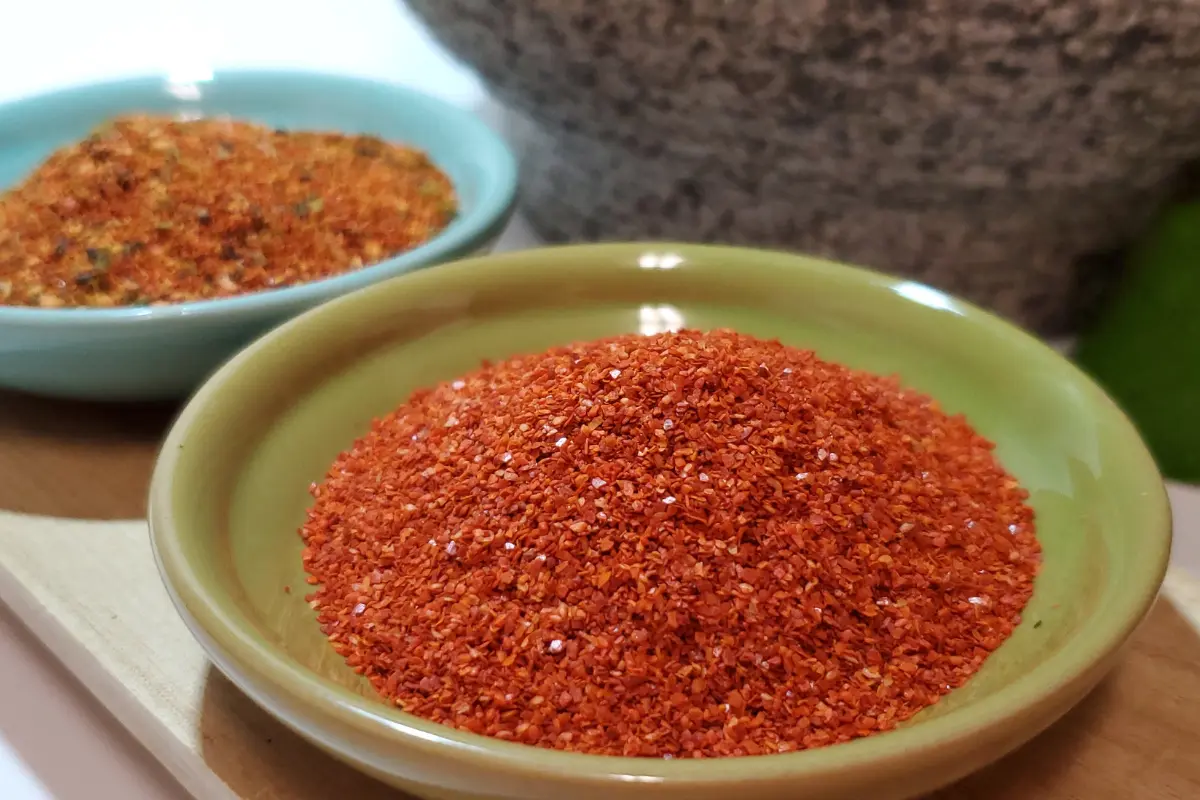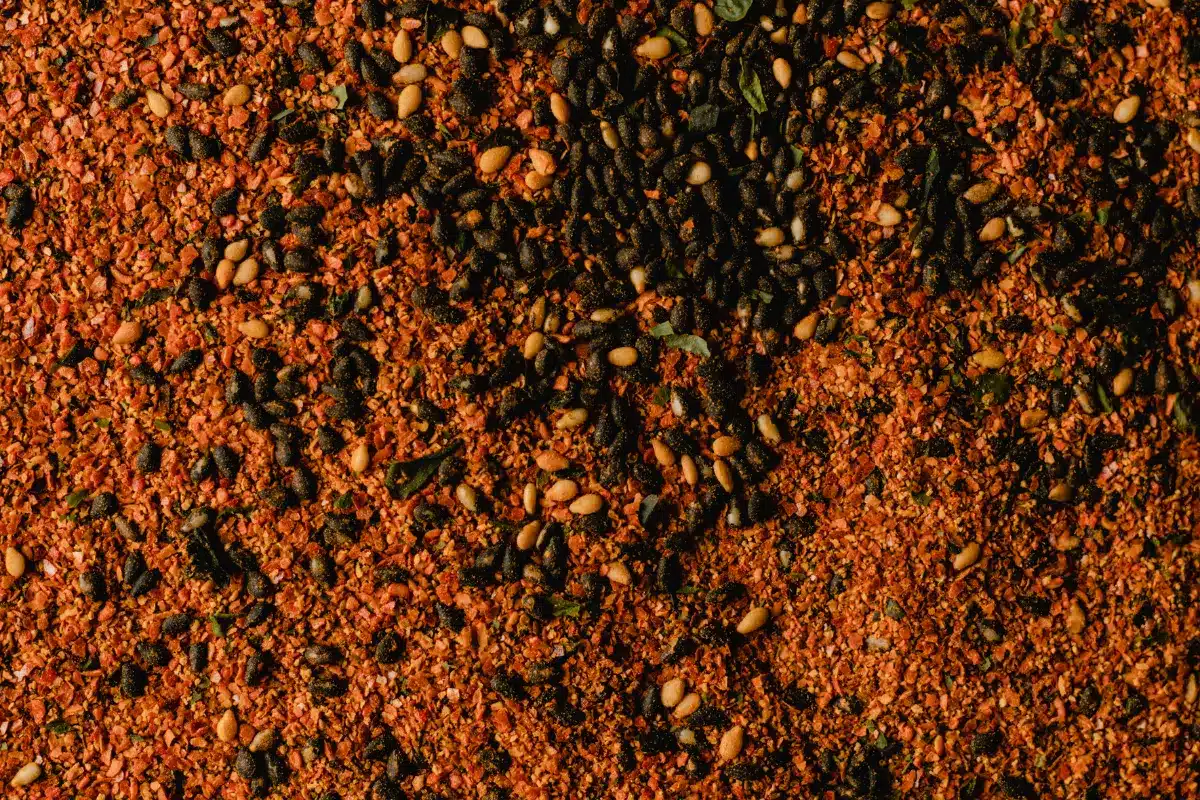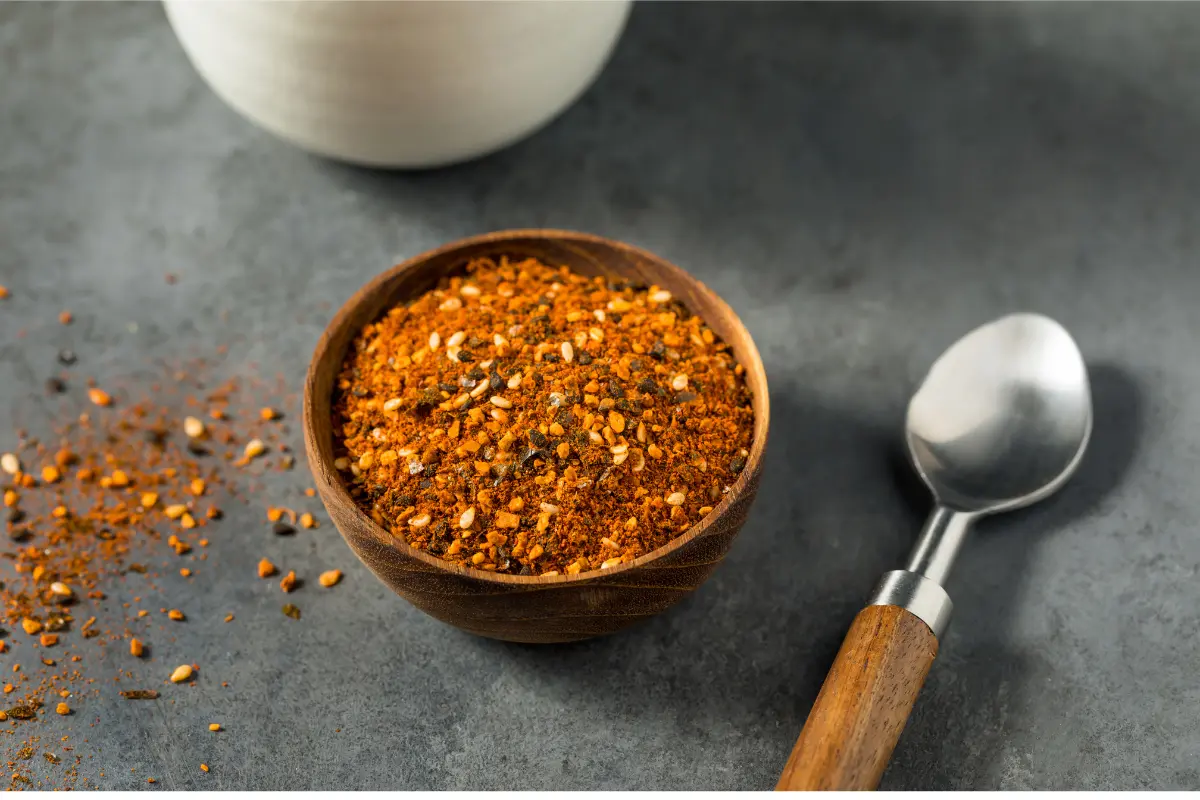Embarking on a culinary journey to the heart of Japanese cuisine, we delve into the world of Togarashi, a vibrant spice blend that adds a burst of flavor and color to any dish. Renowned for its rich history and versatility, Togarashi offers a symphony of tastes, making it a beloved condiment in kitchens far beyond its native land. This article unfolds the secrets of Togarashi, guiding you through its types, preparation, and culinary uses, while answering all your burning questions. So, let’s sprinkle a dash of excitement and explore the spicy world of Togarashi.
What is Togarashi?
Diving into the essence of Togarashi, we uncover a spice that’s as intriguing as it is flavorful. Togarashi, or Japanese chili pepper, stands as the backbone of a family of condiments celebrated for blending chili pepper with a medley of ingredients. This concoction not only brings a sharp, piquant flavor but also introduces a slightly gritty texture that contrasts beautifully with the richness of fatty and fried foods.
The Cultural Significance of Togarashi in Japanese Cuisine
In the realm of Japanese cuisine, Togarashi isn’t just a spice—it’s a cultural emblem. Spanning centuries, its use in seasoning dishes like noodles, yakitori, and nabe showcases its integral role. The blend’s ability to elevate the flavor profile of a meal while maintaining a harmonious balance is a testament to the meticulous nature of Japanese culinary arts. It’s this deep-rooted significance that makes Togarashi a symbol of culinary tradition and innovation.
With each sprinkle, Togarashi not only enhances the dish at hand but also tells a story of flavor, culture, and artistry. So, as we embark on this spicy adventure, prepare to ignite your senses and embrace the warmth and complexity of Togarashi. Stay tuned for our next installment, where we’ll explore the different types of Togarashi and their unique characteristics.
Exploring the Different Types of Togarashi
Shichimi Togarashi vs. Ichimi Togarashi
In the world of Togarashi, variety truly is the spice of life. Shichimi Togarashi, often referred to as “seven-spice blend,” is a symphony of flavors, featuring a combination of seven distinct ingredients, each adding its unique note to the mix. On the flip side, Ichimi Togarashi, translating to “one flavor,” is the purist’s choice, offering nothing but the unadulterated zest of ground red chili peppers. These two varieties serve as the cornerstone of Togarashi seasoning, catering to diverse palates and culinary applications.
Nanami Togarashi: A Unique Variant
For those venturing further into the Togarashi spectrum, Nanami Togarashi emerges as a captivating variant. This blend closely mirrors its Shichimi sibling but with a twist, introducing a citrusy undertone through the inclusion of dried orange peel. This subtle addition transforms the flavor profile, adding a refreshing brightness that complements the spicy kick of chili peppers. It’s this nuanced complexity that makes Nanami Togarashi a favorite among culinary enthusiasts seeking to add depth to their dishes.
Regional Variations and Custom Blends
Venturing beyond the mainstream, the Togarashi landscape is dotted with regional specialties and custom blends, each reflecting the unique culinary traditions and preferences of its origin. From the northern reaches of Hokkaido to the southern islands of Okinawa, local ingredients are woven into the recipe tapestry, creating a rich palette of flavors that celebrate Japan’s regional diversity. These artisanal mixes offer a personalized touch, allowing chefs and home cooks alike to tailor the spice level and flavor profile to their liking.
As we unravel the myriad forms of recipe , it becomes evident that this spice blend is more than just a seasoning—it’s a canvas for creativity. Whether you’re drawn to the simplicity of Ichimi, the complexity of Shichimi, or the citrus notes of Nanami, Togarashi invites you to explore the vast landscape of Japanese flavors. Stay tuned for our next exploration, where we’ll dive into the essential ingredients and substitutes that make up this iconic blend.
Ingredients for Homemade recipe and Their Substitutes
Creating your own Togarashi blend at home is a journey into the heart of Japanese flavors. Here’s a concise list of the classic ingredients found in a Shichimi Togarashi blend, followed by potential substitutes for those hard-to-find items.
Essential Ingredients for Togarashi
- Sansho Pepper or Black Pepper
- Dried Tangerine Peel or Orange Peel
- Ground Red Chili Pepper
- Seaweed (Nori)
- Black Sesame Seeds
- White Sesame Seeds
- Minced Garlic
- Poppy Seeds (optional)
Finding Substitutes for Hard-to-Find Ingredients
- Sansho Pepper Substitutes: Sichuan peppercorns or a mix of lemon zest and ground black pepper.
- Dried Tangerine Peel Alternatives: Dried lemon or lime peel.
- Seaweed (Nori) Options: Finely crushed, unsalted seaweed snacks.
This simplified list ensures you have everything at hand to create a vibrant and authentic Togarashi blend right in your kitchen.
Step-by-Step Guide to Making recipe at Home
Creating your own Togarashi blend at home is a delightful way to personalize your spice cabinet. Let’s walk through the steps to craft a batch of this aromatic, flavorful seasoning.
Preparing the Spice Blend
- Gather Your Ingredients: Start by collecting all the essential Togarashi ingredients. Feel free to use substitutes where necessary to suit your taste or availability.
- Roast Your Spices: Lightly toast the sesame seeds, peppercorns (Sansho or black pepper), and dried chili flakes in a dry skillet over medium heat. This step enhances their flavors and aromas, making your recipe even more vibrant. Keep a watchful eye to prevent burning.
- Grind the Mixture: Once cooled, transfer the toasted ingredients to a spice grinder. Add the dried tangerine or orange peel, nori, and any other elements you’re including. Pulse until you achieve a coarse powder, which is typical for recipe. For a finer texture, grind a bit longer.
- Mix and Store: Transfer your freshly ground recipe to a bowl. If you’ve kept some ingredients whole, like sesame seeds, mix them in now. Store your homemade recipein an airtight container, away from direct sunlight and heat.
Storage and Shelf Life
recipe is best enjoyed fresh but can be stored for up to a month without losing much of its potency. The key to longevity is keeping it in a cool, dark place in a well-sealed container. This precaution helps maintain its piquant flavor and aromatic qualities.
Tips for Perfect Togarashi Every Time
- Balance is Key: While recipe is adaptable, aim for a balance of flavors. Adjust the heat, citrus, and nutty elements to your liking, but try to ensure no single flavor overpowers the others.
- Experiment: Don’t be afraid to add or omit ingredients based on your preferences. recipe is wonderfully flexible, so making it your own can be part of the fun.
- Use Fresh Ingredients: For the best results, use fresh, high-quality ingredients. Freshly ground spices and freshly toasted seeds make a noticeable difference in the final product.
Now that you know how to make your own recipe, the possibilities are endless. Sprinkle it on soups, stews, grilled meats, or vegetables to bring a touch of Japan to your table. In our next section, we’ll explore the myriad culinary uses of Togarashi, demonstrating just how versatile this spice blend can be. Stay tuned!
Creative Ways to Use Togarashi in Cooking
recipe isn’t just a spice; it’s a gateway to exploring the depths of flavor. Its versatility makes it a fantastic addition to a wide array of dishes, from traditional Japanese recipes to modern fusion cuisine. Let’s dive into some culinary inspirations where recipe plays the starring role.
Togarashi for Enhancing Flavor in Traditional Japanese Dishes
- Noodles and Soups: Sprinkle Togarashi over ramen, udon, or miso soup for an instant uplift. Its heat and complexity add layers of flavor to these comforting dishes.
- Grilled Foods: Yakitori (grilled chicken skewers) and other grilled meats or vegetables become irresistibly tantalizing with a dash of Togarashi. Its smoky spiciness complements the charred exterior beautifully.
- Tempura: Enhance the light crispiness of tempura (battered and fried seafood or vegetables) with a hint of Togarashi. It cuts through the richness and adds a delightful zest.
Fusion Cuisine: Incorporating Togarashi into Western Dishes
- Popcorn: Elevate your movie night with Togarashi-spiced popcorn. Its fiery kick and umami richness turn a simple snack into a gourmet experience.
- Avocado Toast: For a breakfast with a twist, sprinkle recipe over avocado toast. The spice blend’s heat and citrus notes bring a refreshing contrast to the creamy avocado.
- Salads: Add a pinch of Togarashi to your salad dressings for a spicy, tangy flavor that enhances fresh greens and veggies.
- Eggs: Whether scrambled, fried, or boiled, eggs and recipe are a match made in heaven. The spice blend adds a punch of flavor that makes a simple egg dish come alive.
These examples barely scratch the surface of Togarashi‘s potential in the kitchen. By incorporating this versatile spice into your cooking, you open up a world of flavor possibilities that can transform the mundane into the extraordinary. Whether you’re a seasoned chef or a culinary novice, recipe offers an easy yet impactful way to experiment with flavors and bring a touch of Japanese cuisine to your table.
Stay tuned for our next segment, where we’ll tackle the most frequently asked questions about Togarashi, providing you with all the insights you need to master this beloved Japanese spice blend.
Frequently Asked Questions
recipe enthusiasts often have questions about this versatile Japanese spice blend. Let’s address some of the most common inquiries to help you get the most out of your recipe experience.
Can I Make Togarashi Without Certain Ingredients?
Absolutely! One of the beauties of Togarashi is its adaptability. If you’re missing an ingredient or two, feel free to leave it out or substitute it with something else that’s more readily available to you. The key is to maintain a balance of spicy, savory, and citrusy notes. Experimentation is encouraged to find the blend that best suits your palate.
How Spicy is Togarashi?
The spiciness of recipe can vary widely depending on the specific blend and the type and amount of chili peppers used. Traditional Togarashi has a moderate heat level that provides a pleasant warmth without overwhelming the dish’s other flavors. However, you can adjust the spiciness to your liking by increasing or decreasing the chili pepper content in your homemade blend.
Best Dishes to Pair with Togarashi
Togarashi is incredibly versatile and pairs well with a vast range of dishes. Here are a few favorites:
- Seafood: The spicy and citrusy notes of recipe complement the natural flavors of fish and shellfish beautifully.
- Rice Dishes: Sprinkle recipe over a bowl of steamed rice or a hearty rice bowl (donburi) for an extra flavor kick.
- Vegetables: Roasted or steamed vegetables become more exciting with a dash of recipe, adding depth and heat.
- Eggs: From omelets to soft-boiled eggs, a sprinkle of recipe can transform an ordinary egg dish into something special.
Togarashi is a testament to the complexity and depth that can be achieved with just a sprinkle of spice. Whether you’re new to this Japanese blend or a long-time fan, there’s always something new to discover and enjoy. Armed with these FAQs and tips, you’re now ready to fully embrace the spicy, vibrant world of Togarashi. Experiment, explore, and most importantly, enjoy the journey of flavors that Togarashi brings to your culinary creations.







